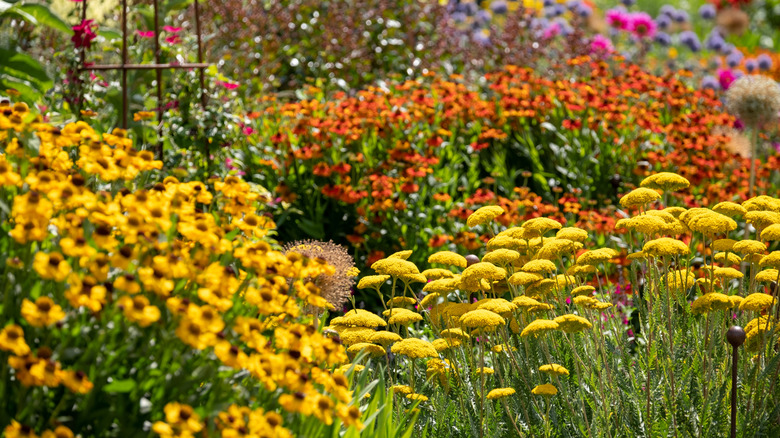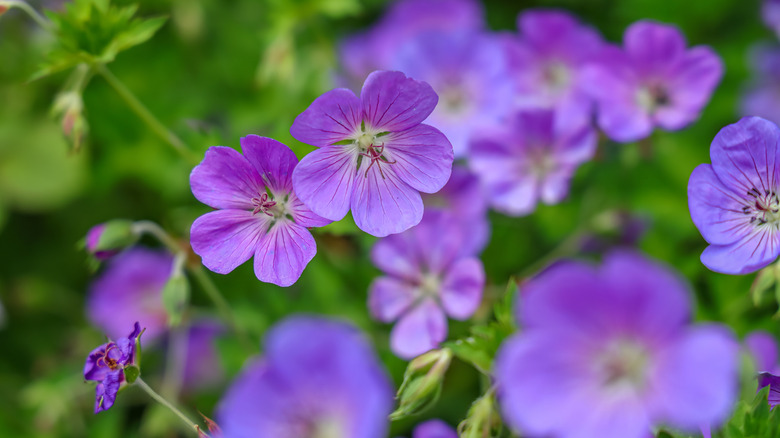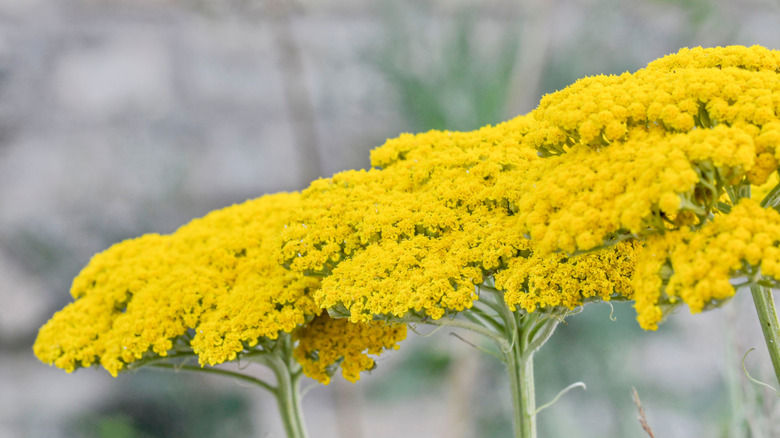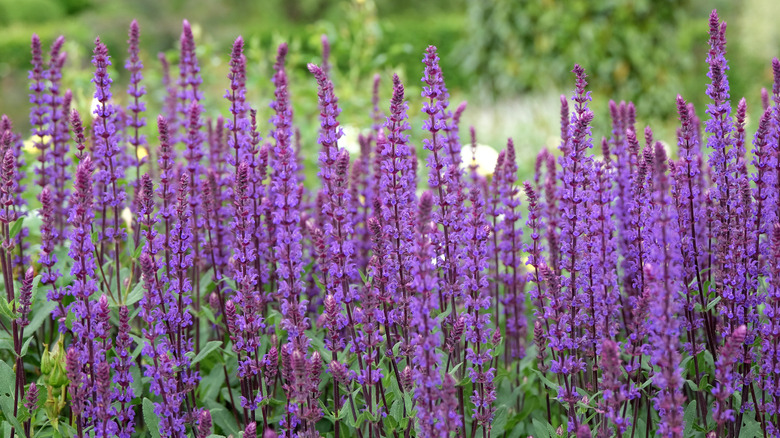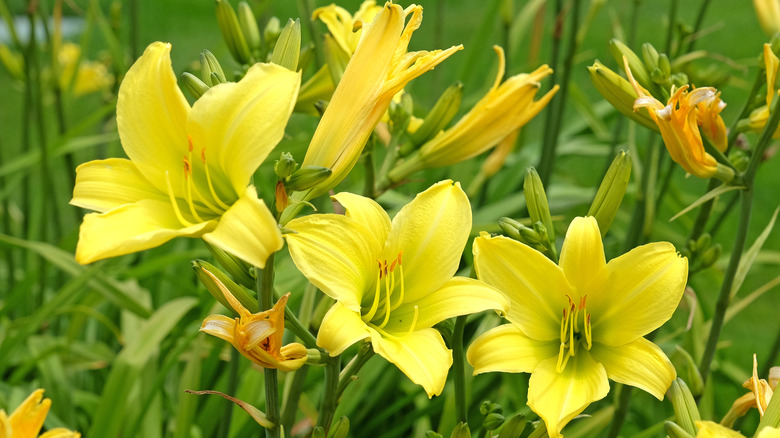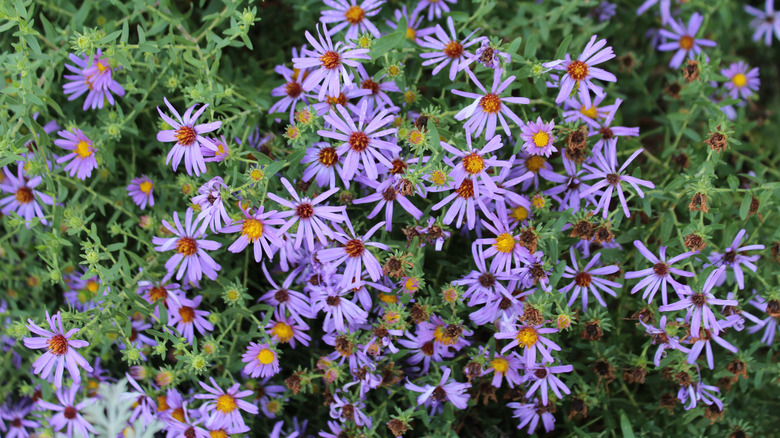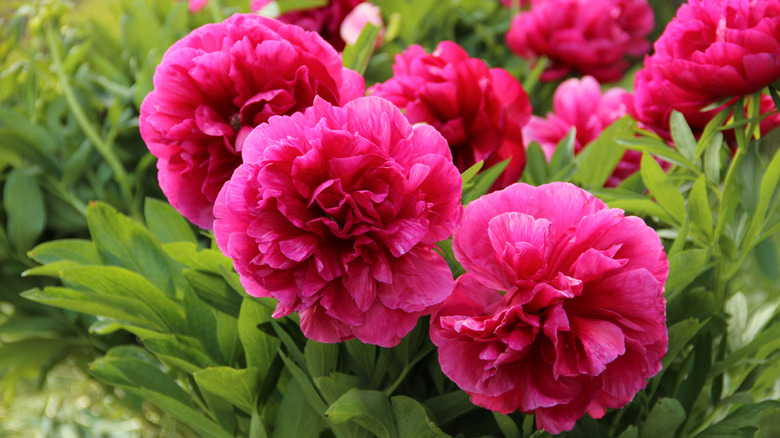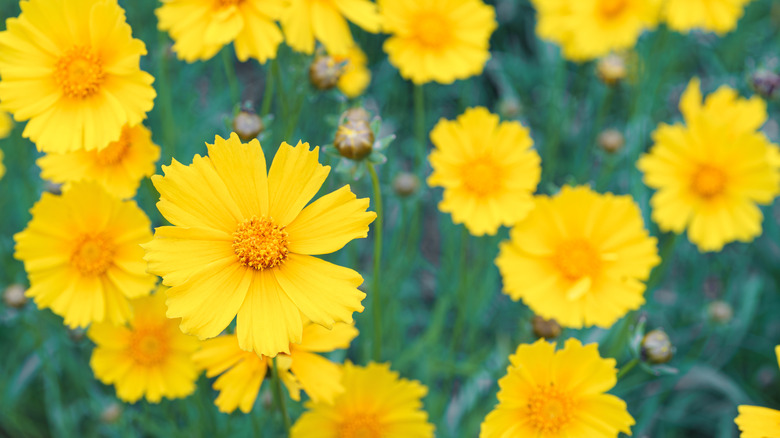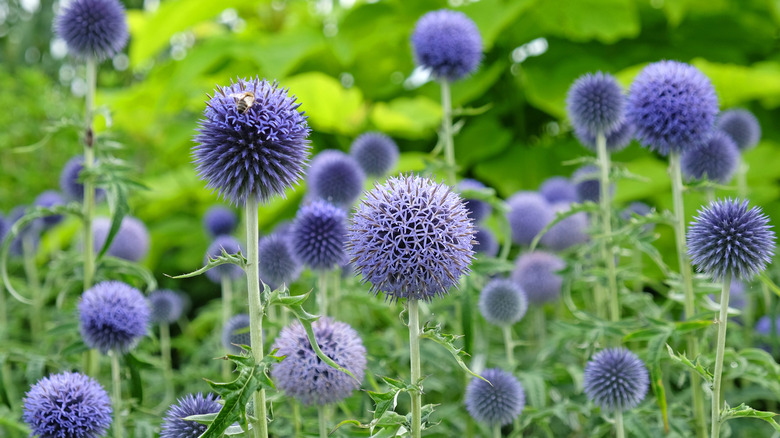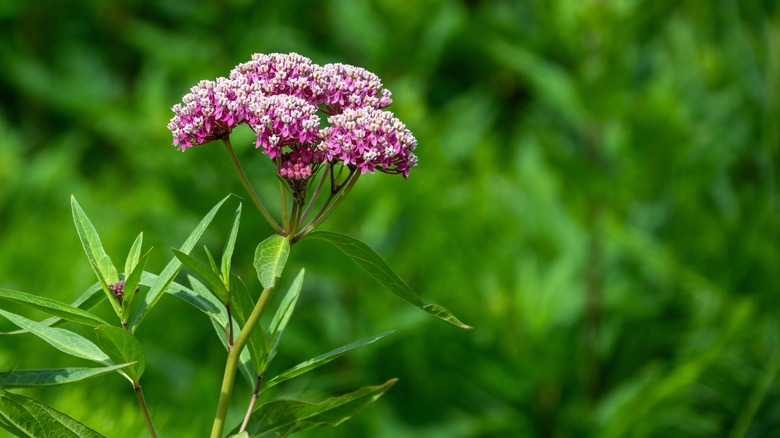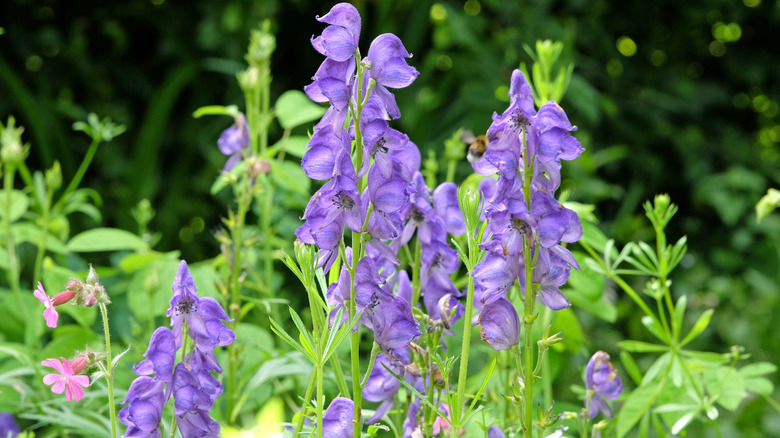11 Hardy Perennial Flowers You Can Rely On For A Lush & Colorful Garden
It doesn't get much more satisfying than planting a hardy perennial flower one time and then getting to sit back and watch the flowers return year after year. Just like adding herbs you can plant once and enjoy year after year, perennial flowers add ongoing value to any landscape. On the flip side, you can be in for quite the disappointment if you plant a tender perennial flower, expecting it to bloom regularly every season ... only to find it didn't survive its very first winter.
Some perennials, like daylilies and asters, are better than others about standing up to cold weather. Tender perennials – the kind of flowers that are susceptible to cold – can only really bloom regularly in moderate climates. In certain zones, they may even act more like annuals than perennials, which kind of defeats the whole purpose of investing in them. You probably pick that type of flower in the first place so that you don't have to worry about what to plant each year!
To make matters more confusing, some flowers, like salvia and geraniums, come in both tender and hardy varieties, which means you might even end up with the wrong sprout or seedling to plant in the garden. But fear not, we've got some of the hardiest, no-fuss, no-muss perennials that promise to hold up to tough conditions and still will keep coming back to bring color to your garden.
Hardy geraniums earn their name
The hardy geranium (Geranium 'Dilys'), also known as cranesbill, weathers USDA Plant Hardiness Zones 4 to 8. Don't confuse cranesbill with the tender perennial geranium, which actually isn't a geranium at all — but a member of the Pelargonium genus that's only hardy down to zone 8. It absolutely won't survive a Midwestern winter. Cranesbill, however, can handle temperatures as low as -30 degrees Fahrenheit. It isn't particular about soil or sunlight, either. Cranesbill will thrive with as little as two hours of full sun, or even sun that filters in through leafy branches overhead.
Yarrow will brighten any garden
Hardy in zones 3 through 9, yarrow (Achillea spp.) is an easy-to-grow herbaceous perennial that will keep on blooming year after year. If you want to know how to care for a yarrow plant, it's easy. They can make do with sun or partial shade, and they like their soil slightly acidic. They're even drought resistant. Just don't overwater yarrow, or you might end up with root rot. Yarrow's genus, Achillea, was named after the famed Greek warrior, Achilles. According to lore, yarrow was used by his soldiers for medicinal purposes.
Add pretty purple blooms with hardy salvia
If you're looking for a hardy, no-fuss purple flower plant hardy salvia (Salvia nemorosa), also known as woodland sage. Preferring zones 3 to 8, hardy salvia will grow clusters of vertical purple or blue flowers from May to September. This low-maintenance, fragrant flower will also attract butterflies and other pollinators to the garden. Hardy salvia prefers lots of sun. It likes for the soil to stay damp, but not water-logged. If you water consistently and deadhead throughout the summer, this plant may keep on blooming through fall.
Daylilies might be the hardiest of the bunch
If you're looking for a plant that even the most hapless of gardeners can grow, try the daylily (Hemerocallis spp.). This might just be the toughest, most versatile, and most indestructible flower of all the hardy perennials. This plant doesn't fall prey to many pests or diseases and will be grow in zones 3 to 9. While most of its blooms will only last 24 hours, you probably won't notice because the daylily is such a ferocious bloomer. Each mature plant can grow hundreds of flowers per season.
Attract pollinators into the garden every year with smooth aster
Smooth aster (Symphyotrichum laeve) isn't just a no-fuss, easy-to-grow perennial with flowers reminiscent of daisies, it's also a pollinator favorite. Not only will you draw in lots of butterflies and bees with this flower, but you'll keep doing so late in the season. If you plant this underrated flower in August it will look stunning in the fall. Hardy in zones 4 to 8, the smooth aster loves well-drained soil. It'll grow most anywhere, including in sand, silt, and clay. Once it's mature, it'll even be drought tolerant.
Blanket flower will blanket your garden in color
If you want to blanket your garden with fiery reds and oranges, then look no further than the blanket flower (Gaillardia spp.). You might find blanket flowers growing wild across North America. A cousin of the daisy, blanket flowers will grow in a number of soils with different pH levels. They're hardy in zones 3 to 9. Know blanket flowers can be short-lived perennials, meaning they'll return only for a few years. But if you divide flowers regularly, you'll extend their life in your garden.
Big, beautiful peony blooms are hardier than they look
Who doesn't love a beautiful, oversized, sweet-smelling peony (Paeonia hybrids)? These flowers are hardy in zones 3 to 8. They'll take full sun, but also make do in partial shade. Keep in mind that these flowers like good air flow, so don't crowd them with other plants. You might have heard that peonies depend on ants in order to blossom, but this isn't true. Ants do eat peony nectar, however, and they protect the flowers from other potentially more destructive pests.
Bring a burst of yellow with tickseed
A cousin of aster, the tickseed (Coreopsis grandiflora) is a champion hardy perennial that will bloom all season long. Tickseed thrives in zones 4 to 9, and happens to be heat and drought tolerant, too. Tickseed, also known as the coreopsis flower, won't fuss about soil, and will grow in rocky, sand, or clay. Though, if pressed, it would probably prefer slightly acidic soil. This cheerful flower comes in a number of colors, too, including yellow, pink, orange, and purple.
Globe thistle will bring unique texture to the garden
To add a bit of unique texture to your garden year after year, plant the globe thistle (Echinops ritro). This hardy perennial will grow in silt, sand, clay and shallow rocky soil, but would rather skip the fertilizer, thank you very much. It thrives in many climates, including zones 2 to 8, and it might even reseed itself and grow more flowers. Globe thistle prefers lots of sun. Make sure to keep its roots moist, but not drenched.
Joe Pye weed brings an easy pop of color
Don't let its name put you off. The Joe Pye weed (Eutrochium dubium) is prettier than most other "weeds." It's a colorful perennial that can brighten any garden. Another cousin of the daisy, Joe Pye weed does well in zones 3 to 9, and will grow in pretty much whatever soil you plant it in ... though it prefers the pH to be slightly acidic. Historians believe the flower was named after Joseph Shauquethqueat, a 1700s Mohican tribal leader. His white neighbors in Massachusetts referred to him as Joe Pye.
Monkshood is no fuss, no muss
Monkshood (Aconitum spp.) is a hardy perennial that will grow in just about any soil pH as long as the site has lots of organic matter and is well drained. The purple flower will thrive in zones 3 to 8, but beware: It is part of the buttercup family, which means it's poisonous if eaten. While it will thrive in full sun, it'll also get by with between two and six hours a day. Monkshood will grow to between 3 and 4 feet tall once established.
